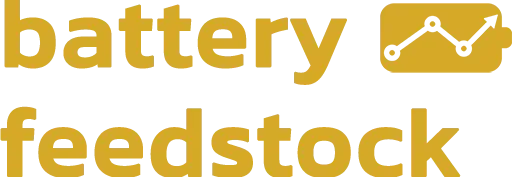Market Dynamics: Production Expansions, Price Trends and Policy Shocks
Battery‑metals markets remained volatile during August 2025. While miners and refiners announced ambitious expansions to meet future lithium demand, nickel, cobalt and manganese prices showed mixed trends. Policy interventions – including U.S. tariffs on graphite, manganese, cobalt and lithium – further complicated supply‑chain planning. This article reviews production updates, market indicators and emerging risks across key battery commodities.
Lithium supply expansions amid price headwinds
Several projects advanced in August. Atlas Lithium’s Salinas project in Brazil’s Lithium Valley confirmed shallow spodumene mineralization with Li₂O grades exceeding 2%, suggesting a low‑cost open‑pit mine. The drilling program found pegmatite bodies just 23 m below surface, and the company completed 501 m of diamond drilling. These results position Salinas as a new growth engine alongside Atlas’s flagship Neves project.
Chilean producer SQM raised its 2025 sales guidance, expecting global lithium demand to grow 17% and planning to expand lithium‑carbonate capacity in Chile to 240 000 mt/year by 2026. It also aims to increase lithium‑hydroxide capacity to 100 000 mt/year by the end of 2025, with commercial production commencing at its Kwinana, Australia refinery. The strategy prioritizes volume over price, seeking to capture market share despite low spot prices.
In Australia, Covalent Lithium began producing battery‑grade lithium hydroxide at its 50 000 t/y Kwinana refinery. The output is enough for roughly 1 million EVs (assuming 50 kWh packs). Covalent is ramping up operations and preparing product samples for qualification. The refinery forms part of a joint venture between Wesfarmers and SQM, highlighting vertical integration strategies.
Nickel, cobalt and manganese: weak demand and price pressure
Our weekly review noted that Indonesian nickel ore prices declined slightly to US$15 013/dmt, while premiums for laterite ore remained at US$24–26/wet t. With abundant supply and smelter demand still weak, analysts expect ferro‑nickel ore prices to face downward pressure. High‑nickel pig iron prices continued to rise due to cost support, reaching 927.5 RMB per nickel unit, but demand from stainless‑steel mills remained sluggish. Overall, cost support and weak fundamentals suggest limited price gains ahead.
On the cobalt front, spot cobalt‑sulphate prices hovered around 50 000 yuan/mt, with smelters refusing to cut offers and downstream buyers maintaining just‑in‑time procurement. Rising raw‑material costs may keep prices firm, but further gains depend on actual demand. Similar tightness was seen in cobalt intermediate products, where miners held back supply and trades occurred around US$13.1–13.25/lb (from the intermediate product article). Manganese ore prices softened slightly at Chinese ports, with Australian lumps down about 1% week over week as steelmakers pushed for lower prices.
Anode material market poised for strong growth
The lithium‑ion battery anode materials market is forecast to grow from US$4.56 billion in 2023 to US$14.2 billion by 2032, a compound annual growth rate of 13.46%, driven by EV adoption, consumer electronics demand and the rise of energy‑storage systems. Graphite remains dominant, but silicon‑based composites promise ten‑times higher theoretical capacity and are attracting significant R&D investment. However, high costs, supply‑chain risks and environmental concerns pose challenges for scaling advanced anodes.
Policy shocks: U.S. tariffs on battery metals
U.S. trade policy added volatility in August. President Donald Trump imposed 50% tariffs on copper while extending 50% duties to more than 400 steel and aluminum derivatives. Although raw copper was exempted, tariffs on derivative products sent copper premiums tumbling. Brazil and Canada face higher duties (35% and 50%) on certain metals; however, pig iron – essential for steel – remains subject to only 10% tariffs. Importantly for battery producers, graphite, manganese, cobalt and lithium are included in the heightened duty rate, raising costs for U.S. buyers. China’s tariff deadline has been extended and U.S. tariffs will stay at 30 % while negotiations continue. These measures encourage domestic production but risk supply disruptions if trading partners retaliate.
Investor takeaways
Investors should monitor both supply expansions and policy developments. The surge in lithium‑project announcements suggests producers expect a medium‑term price recovery, but oversupply could keep spot prices depressed. Nickel and cobalt markets face opposing forces: cost‑driven support versus weak steel and battery demand. Strategic diversification across metals and regions – including exposure to recycling and alternative chemistries – can hedge against policy shocks such as tariffs. As the anode materials market evolves, early‑stage technologies (silicon composites, sustainable graphite) offer upside but carry execution risk.
